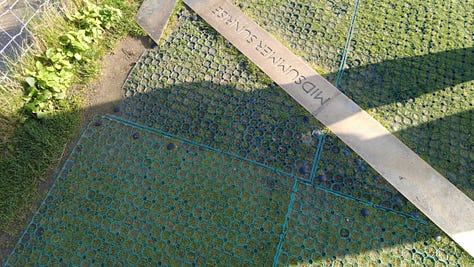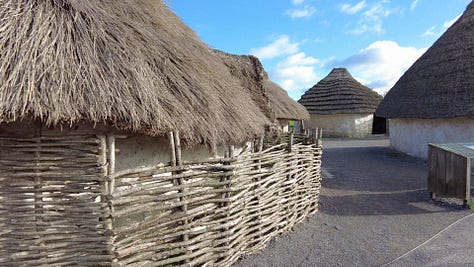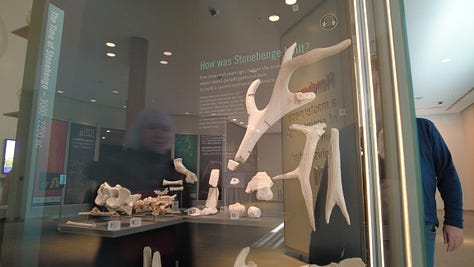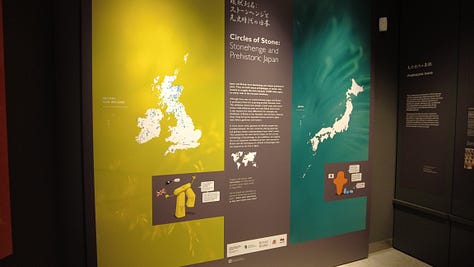On a very cold but sunny November morning, I made the trip to one of the oldest man-made tourist attractions in England. It’s not that it was built as a tourist attraction; most likely, it was a sacred place for an ancient race of people. Today, bustling with tourists from all over the world, even in November, Stonehenge is extremely popular. Why are these stones so revered?
The Mystery of Stonehenge
To some degree, the stones are still a mystery, and many archaeologists have spent lifetimes investigating them. Stonehenge is surrounded by other pre-history objects, the barrows (tombs), other earthworks, and the smaller stones at Avebury. In times past, the ancients worshipped the sun. It was to them the giver of life, and Stonehenge does act as an astronomical calculator. The site is aligned in the direction of the sunrise of the summer solstice and the sunset of the winter solstice. The stones have been here since around 2500 BC, although there are signs that people lived here before.

English Heritage manages the site. However, The National Trust manages much of the surrounding landscape, and the members of both organisations can visit without further charge. I found that the whole experience of visiting was well organised. I pre-booked my ticket online, which is recommended. A guidebook for £6 is good value and will be something to keep on your bookshelf and read at your leisure. A guided walk using an app on your phone seemed to be popular with the many tourists arriving throughout the morning. The visitor centre, which was opened in December 2013, has dramatically improved the visitor experience compared to what it was before. I will return to the visitor centre later, as my priority was to take the shuttle bus (included in the ticket) to the stones. The buses run every five minutes. It’s a trip of a mile and a half, which some like to walk and can detour off the road through the countryside. The bus will drop you off before the stones if you wish to walk partway through some woods.
This is open pastureland, and disembarking from the bus, I could feel the coldness of the wind, even at this time of the year. I wonder how those early pre-history settlers coped in the grip of winter? The bright sunshine made the stones stand out against the clear and bright blue sky above the Wiltshire landscape. No one can get up and personal with the stones, and a path and low fence show where I should walk. A few English Heritage personnel are on security duty. When I was younger, there was little provided for visitors, and anyone could go up to the stones. Over the years, more have visited, and there have been times when clashes have occurred with the police when thousands of hippies in the 70s would camp in their vans and converted buses for the summer solstice. The site could not cope, and damage was being done to this rich archaeological landscape, and action had to be taken to manage it.
A henge is a circular earthwork. Such an earthwork surrounds the stones. Hence the name: Stonehenge
Walking around Stonehenge








The footpath becomes grass about a third of the way around; however, it was dry enough for standard shoes to complete the circle, viewing the stones from every angle. An east-west line is laid over the pathway as you get to the opposite side of the bus stop. Going around the stones is fun, watching the tourists taking their selfies as they rush from one venue to another on their whistle-stop tours of the UK. Many American accents filled the air, with other more muted tones from Japan, China and beyond talking about the stones.
Where do the stones at Stonehenge come from?
Over the years, there has been much debate about how those ancient people moved the stones great distances to build Stonehenge. The larger stones are sarsen stones, and it has been scientifically confirmed that they come from the Marlborough Downs. In fact, it has been narrowed down to a specific area known as West Woods, southwest of Marlborough. These stones, on average, weigh an impressive 25 tons, with one as much as 30 tons. Imagine moving these stones 20 miles (32km) without a truck or railway.
The smaller bluestones have travelled much further. They come from the Preseli Hills in southwest Wales. They weigh between 2 and 5 tons each. It may be that they were brought by boat along the Welsh coast and then into the Bristol Channel. From there, the River Avon would be a highway to float them close to Stonehenge. If not, it could have been across the land to the Bristol Channel and then the River Avon. Of course, we will never know for sure, which, I guess, makes Stonehenge even more intriguing.
We have to remember that the stones have not been standing like this since they were placed into position. Many had fallen over, and another stone collapsed on 31st December 1900, sparking the desire to ensure Stonehenge survived. In 1919 work started in earnest to protect and provide some restoration to this ancient monument. The guidebook provides some photographs of what has been accomplished. A 19th-century photograph shows just how few stones were standing at that time.
The sarsen stones would originally have appeared white. Today they are weathered and have had bits chipped off by tourists, particularly those pesky Victorians for their souvenir drawers. The bluestones appearing darker would have made the view of the stones much more dramatic than today, especially in bright sunshine.
Having completed a circular walk around the stones, taken many photos, and shot plenty of video, I now head back to the bus and enjoy the escape from the wind on the way back to the Stonehenge Visitor Centre. As is often the case upon leaving the bus, the path leads through the gift shop! It’s a nice size, and English Heritage does sell an excellent range of gifts to the tourists passing through.
If you would like to chat with me about Stonehenge, join me on the Substack app. Click below if you’re not reading this on the app for the link to obtain it.
Stonehenge Roundhouses
I manage to hold onto my money, and my next stop is to look at the roundhouses built outside the centre. Those workers constructing Stonehenge would have lived in similar homes, a design still used in some parts of the world. Entering a roundhouse through the single low doorway again takes me away from the cold wind, and even though unheated, the dark interior of the house did not feel cold.








The people back then, although we might call them primitive, were clever. They could utilise whatever they had to move those stones, shape them and build houses. Life on those open plains could not have been easy. The landscape today reflects what it would have been like 4000 years ago, and the openness means the wind when cold is not pleasant. We could say that, in some ways, they are one up on the modern archaeologists who have spent years trying to work out how they could move and erect the stones all those years ago! In fact, they are still not sure.

The Stonehenge Visitor Centre
My final destination (I didn’t try out the cafe) is the museum with around 300 archaeological finds that are very well displayed. There are video displays, and as you enter, there are curved screens on your left and right, with Stonehenge displayed at different times of the day. A group of school children with their teachers sit on the floor, excitedly watching the changing scene before their eyes. The sun rises and sets, the stars shine, and the glow of fires appears in this modern-day display.
The rest of the centre also tells the story of Stonehenge very well with artefacts and videos. A special exhibition area has an exhibit dedicated to stone circles in Japan of a similar era to Stonehenge. I had never heard of such places, and it was interesting to learn about them. The display's star, the ‘Flame Pot’, is designated in Japan as a national treasure and is a highly decorated type of Jomon ceramic made in central Japan about 5,000 years ago. This is the first time that it has left Japan. The Jomon period covers the European Mesolithic, Neolithic and early Bronze Age periods.









If you consider visiting Stonehenge, I can certainly recommend it. Book online even if you are a member of English Heritage or the National Trust. There is a special desk for those who have booked online.
If you want to see my walk around the stones and museum video - click here.
Thank you for reading this latest post here at Roland’s Travels. If you haven’t subscribed yet, please use the box below.
How to Support Roland’s Travels
There are several ways you can support me and this newsletter:
1 If you wish, you can show your support for what I do through Buy Me a Coffee. However, I’ll probably end up buying tea or petrol.
I understand that not everyone who would like to will be in a position to support in this way, and that’s fine! My content is available to everyone, regardless of their circumstances.
2. Please subscribe.
3. Share Roland’s Travels with your friends and on your social media channels.







